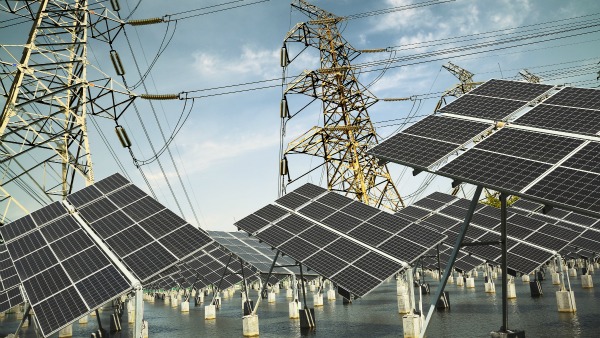This week I’ve been writing about U.S. utilities and their struggle with distributed solar power. Now, along comes a story that might as well have been custom designed to illustrate the point.

(Now featuring cute animals!)
The city of San Antonio is served by CPS Energy, which provides it with both electricity and natural gas. CPS is different from the utilities involved in the Edison Electric Institute, the ones who put out the report I wrote about on Wednesday. Those are investor-owned, for-profit utilities; CPS is a municipal utility, which means it is owned by the city — theoretically, owned by its ratepayers.
Nonetheless, CPS faces the same basic problem with distributed solar as its investor-owned brethren.
Residential and commercial customers in San Antonio who install rooftop solar are compensated via a net-metering program. What this means is, every kilowatt-hour of power they produce cancels a kilowatt-hour they consume. Their bill is the remainder.
It’s important to understand what this means. Customers pay retail rates for electricity; if their solar power cancels out the power they would buy from the utility on a one-to-one basis, it means that they are being paid retail rates for the electricity they produce.
From CPS’s point of view, that’s a problem. See, when CPS buys power (from itself, effectively; it owns power plants), it pays the wholesale rate, which is considerably cheaper than retail. It marks that power up before it sells it to customers. Why? Because the retail rate reflects not only the cost of power but also the cost of all CPS’s other assets. Charges for “fixed assets” — power plants, power lines, transformers, meters, and all the other stuff involved in providing electricity — are mixed with charges for “variable assets” — fuel and electricity — into a single rate: the retail rate.
Under net metering, if a rooftop solar customer generates as much electricity as she consumes, she pays nothing. If she generates more than she consumes, the utility pays her. In either case, her portion of the utility’s fixed costs is transferred onto other, non-solar ratepayers. As more and more people opt for solar, fixed costs are paid by a smaller and smaller group of customers, which drives rates up, which drives more and more of them to solar, in a vicious cycle. The utility’s fixed assets are “stranded” — it is unable to recover those investment costs because of the shrinking pool of customers. (It’s also worth noting that the first customers to go solar tend to be well-off, which leaves the less-well-off paying more, so there’s an economic-justice angle here too.)
So CPS wants to cancel its net-metering program. It wants to stop paying rooftop solar producers the retail rate for their electricity. Instead, it wants to pay them the wholesale rate — a little over half as much — through a “SunCredit.” The roughly 1,000 customers who currently have solar would be “grandfathered in” to the net-metering program until 2023; the new rate would apply only to new solar users.
From CPS’s perspective, this makes sense. Under its proposal, it would be paying rooftop solar producers what it pays other energy producers and charging them for fixed costs like all other ratepayers. And it is taking the strategically savvy step of making this change before the vicious cycle kicks in, and before the solar lobby is powerful enough to stop it.
Naturally, San Antonio’s fledgling solar industry sees it differently! If you cut the incentive for rooftop solar in half, you’ll get less rooftop solar and you’ll need fewer solar installers. “They’re going to kill the solar industry,” said the head of advocacy group Solar San Antonio.
Now, if rooftop solar were just another source of power, we might conclude: tough luck, solar industry. You’ll have to play on a level playing field. Sorry about all the lost jobs.
But rooftop solar is not just another source of power. For one thing, it produces savings for the utility, in terms of avoided transmission and equipment costs, as I discussed yesterday. But more broadly, it produces positive social externalities — it reduces air pollution and carbon emissions, benefiting the public health, and drives down the costs of subsequent solar, expanding markets. Plus the whole energy democracy thing. Solar power is something we should be encouraging through public policy. We should be subsidizing it.
CPS can’t let a shrinking group of ratepayers face perpetually rising costs. It can’t allow its assets to be stranded. Then again, when solar penetration is still tiny, rates are rising for other reasons having nothing to do with solar, and CPS executives are busy granting themselves enormous bonuses, abruptly yanking the rug out from under the solar industry doesn’t seem like a great solution either.
The dilemma, again, is how to align CPS’s incentives so that it can drive rapid solar adoption and reliably recover costs from its fixed assets and protect its lower-income ratepayers from being unfairly burdened.
If we can’t figure out a solution to that dilemma, more and more utilities will do what CPS is doing and the spread of rooftop solar in the U.S., which has barely gotten underway, will slow to a crawl. That isn’t what we want, is it?




